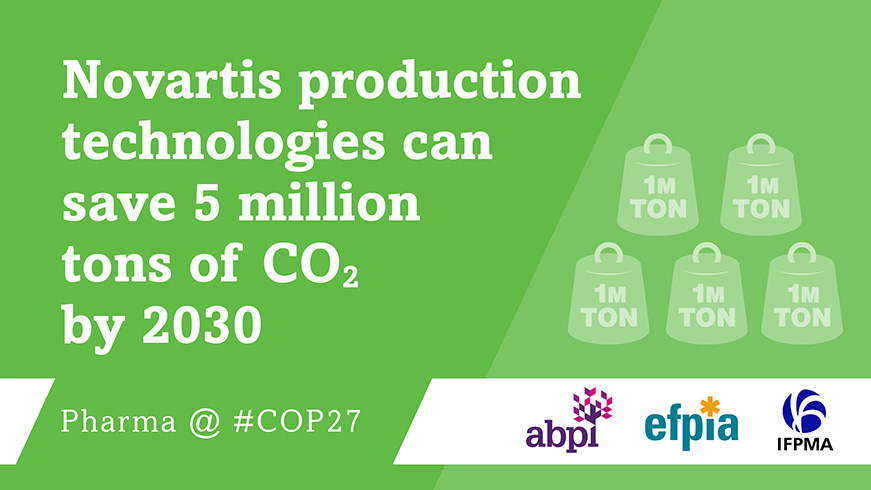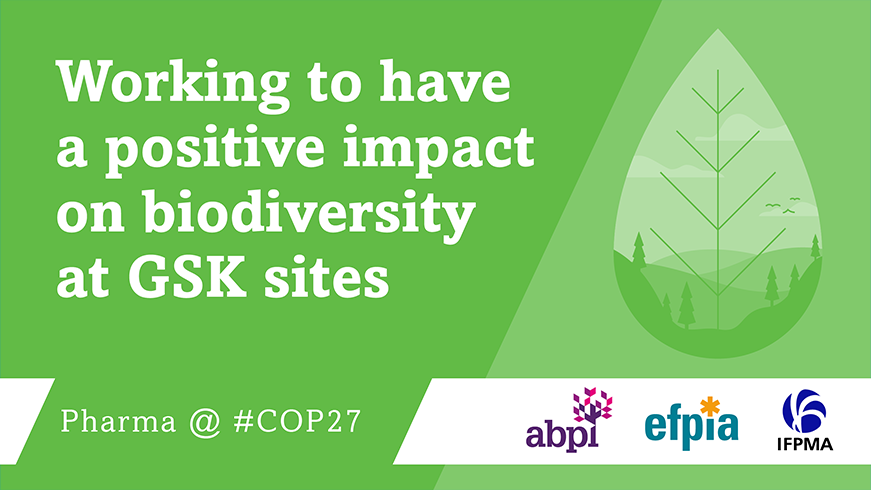Sustainability by design
Pharmaceutical companies are using green chemistry principles and changing the way they manufacture products to reduce the total environmental impact of creating medicines.
This can often mean reduce carbon emissions, saving water and cutting waste all at the same time.

Novartis
The production of some types of medicine requires solvents and, in several cases, precious metal catalysts with very high greenhouse gas impact. In most of Novartis’s manufacturing facilities they recover, recycle and re-use solvents and catalysts.
For two pilot compounds Novartis was able to demonstrate a recovery rate of 75-85% of two precious metals, with potential savings of 20,000 tons of CO2 by 2030.
The company is also using cutting-edge technologies to reduce the volume of materials required to produce drug substances. These have the potential to save 5 million tons of CO2 by 2030.
GSK
Making nature easily accessible where we live, work, and play improves mental and physical wellbeing and GSK is committed to achieving net positive biodiversity at all their sites by 2030.
This is part of GSK’s goal to have a net positive impact on nature by 2030. At their Stevenage site in the UK, they have already established a baseline of the species and habitats at the site and created a plan to deliver a 39% increase of biodiversity, including grass, wood, and heathlands.
This pilot project will be rolled out, ensuring all GSK sites have measurable and realistic biodiversity plans in place by 2025.

Last modified: 20 September 2023
Last reviewed: 20 September 2023
